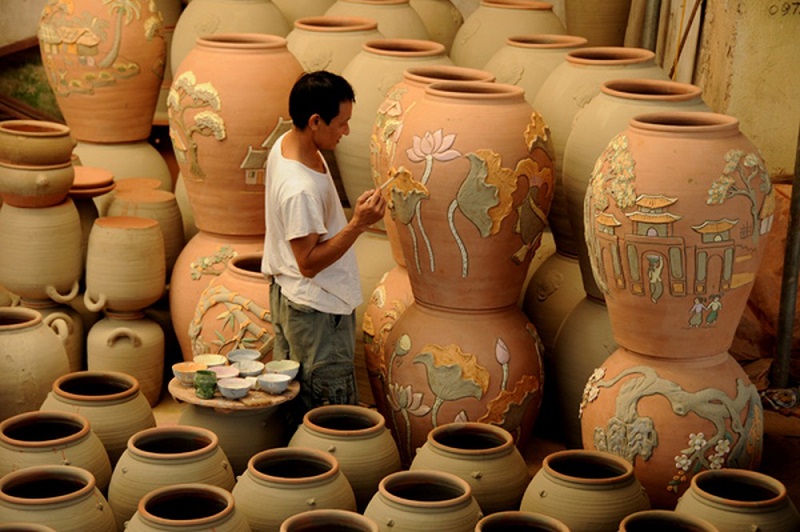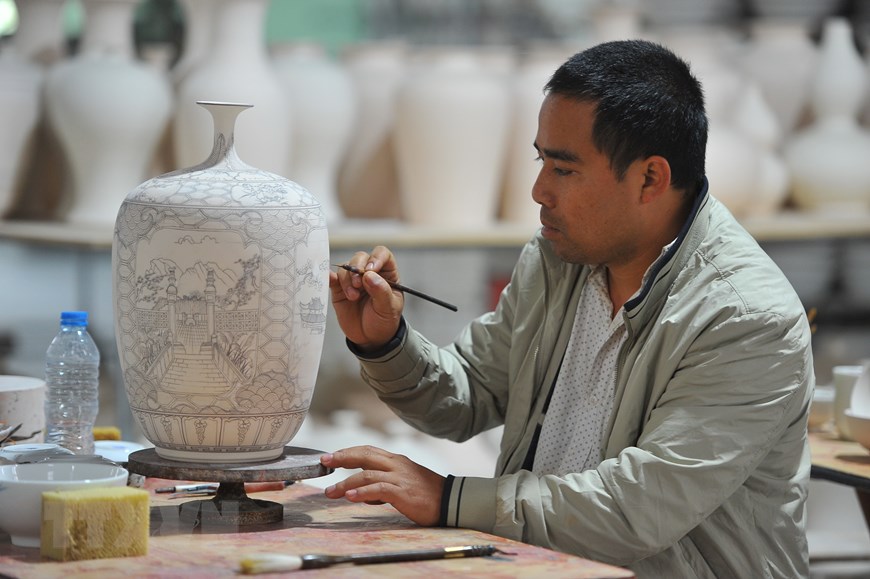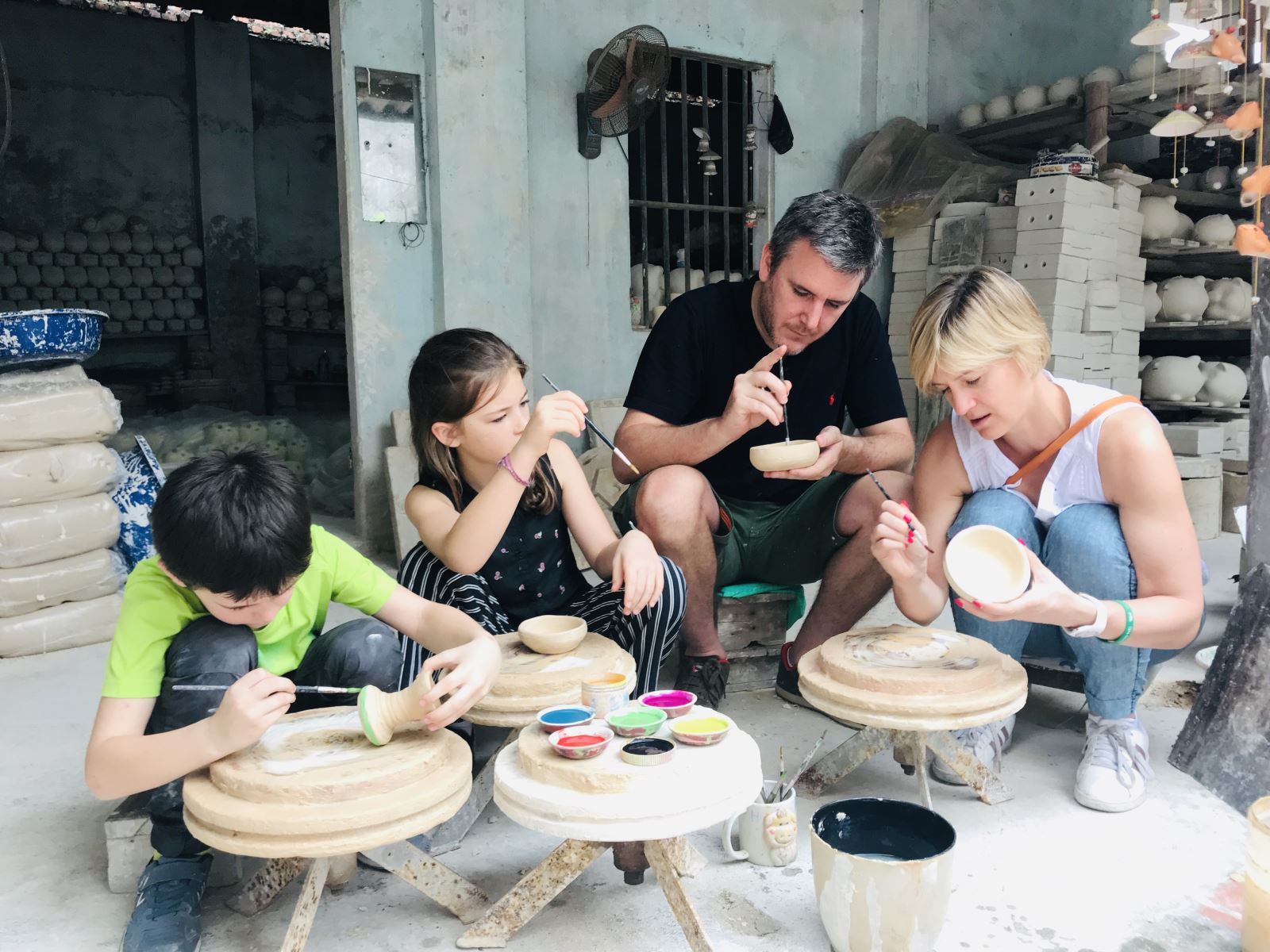In his work “Dư địa chí” (The Geography of Vietnam), Nguyễn Trãi mentioned that the products from Bat Trang village were chosen as tribute to China. Despite over 500 years of history with various ups and downs over time, the name Bat Trang still exists and continues to thrive until now.
Bat Trang Pottery Village is located on the bank of the Red River, now belonging to Bat Trang commune, Gia Lam district, Hanoi, more than 10km southeast of the city center. It is a famous traditional village known for its ceramic products.
Table of Contents
The Founders of Bat Trang Pottery Village
According to historical records, this traditional craft village was established in the 14th-15th centuries during the Lý dynasty. The birth of Bat Trang pottery village in Hanoi was attributed to five famous pottery lineages, including the Trần, Vương, Nguyễn, Lê, and Phạm families from Bồ Bát pottery village in Ninh Bình province. These five lineages combined their skills to produce ceramics, giving rise to Bat Trang pottery village.

A Village without Farmland
Bat Trang Village is unique because it is a Vietnamese village without any farmland. Simply because the village is located outside the dyke, there used to be only a riverbank, but when the riverbank eroded, there was no more arable land. Therefore, the villagers mainly make a living from pottery, trading betel leaves and fish sauce.
To have burial grounds for the deceased, the village had to borrow land from neighboring villages. The current cemetery of the village is located in Thuận Tốn hamlet, Đa Tốn commune, Gia Lâm district. The village also does not visit ancestral graves during the Qingming Festival (Tomb-Sweeping Day) as usual but visits them on the 6th day of the first lunar month when descendants return to the countryside for Lunar New Year celebrations.
A Village without Bamboo
Bat Trang Village is a Vietnamese village that does not have any bamboo, not even for making fences. Simply because of the limited space and dense population, combined with the availability of Bat Trang pottery, all the houses in the village are built with bricks, including vertical brick walls made from Bat Trang bricks.
The village is also unique because it does not have thatched houses. This is simply due to the nature of the kiln-making profession. When the kiln is in its final firing stage, the fire reaches its peak, billowing smoke and ash. If the houses were thatched, they would be prone to fire.
The Traditional Pottery Making Process
Bat Trang Pottery Village is known for its traditional pottery making process that has been passed down through generations. The process involves several steps, including clay preparation, shaping, decorating, glazing, and firing.
The clay used in Bat Trang pottery is sourced from nearby areas, including the Red River. The clay is carefully selected and processed to remove impurities and achieve the desired consistency. Skilled artisans shape the clay using various techniques like hand-throwing on a pottery wheel or molding by hand.
After shaping, the pottery is left to dry before undergoing the decoration phase. Intricate patterns, motifs, or designs are hand-painted onto the pottery using colored glazes or underglaze techniques. The artisans’ expertise and creativity are showcased in the intricate details and artistic elements of the pottery.
Once decorated, the pottery is coated with a glaze made from ash, limestone, and clay. The glaze enhances the appearance of the pottery, adds a protective layer, and helps achieve the desired colors and finishes during firing.
The final and crucial step is firing the pottery in kilns. Traditionally, wood-fired kilns were used, but modern techniques now include electric or gas kilns. The firing process requires precise control of temperature and timing to achieve the desired results. The intense heat transforms the clay and glaze into a durable ceramic material.

Preserving Traditional Craftsmanship
In recent years, Bat Trang Pottery Village has faced challenges due to urbanization, changing consumer preferences, and competition from mass-produced ceramics. However, efforts have been made to preserve and promote the traditional craftsmanship and cultural heritage of the village.
Local authorities, artisans, and organizations have collaborated to establish craft cooperatives, workshops, and cultural centers. These initiatives provide training, support, and a platform for artisans to showcase their skills, create unique designs, and adapt to contemporary demands while maintaining the essence of traditional Bat Trang pottery.
Tourism has also played a significant role in promoting and sustaining the village’s pottery industry. Visitors can explore the village, observe artisans at work, participate in pottery workshops, and purchase exquisite ceramics as souvenirs.Bat Trang Pottery Village stands as a testament to the enduring craftsmanship and cultural legacy of Vietnam. With its rich history, skilled artisans, and unique pottery products, it continues to captivate locals and visitors alike, preserving the beauty of traditional Vietnamese ceramics for generations to come.
Experience the rich history and exceptional craftsmanship of Vietnamese ceramics at the renowned Bat Trang Pottery Village. From humble beginnings to worldwide acclaim, this village has perfected the traditional pottery-making process over centuries. Despite modern challenges, efforts to sustain and promote the village’s cultural heritage through craft cooperatives, cultural centers, and tourism have been successful.
Ready to begin a journey of Vietnamese language and culture? Join Vietnamese Language Studies (VLS) and unlock the beauty of the Vietnamese language. Our personalized programs and innovative teaching methods will guide you every step of the way. Visit our website or contact us at contact@vlstudies.com to learn more and start your language learning adventure today!





Earn passive income Affiliate Marketing